Many creators now rely on podcasts to make content and share information with their audience. Almost every influencer has participated in or has started a podcast where they share their thoughts and experiences online. As such, it’s a perfect time to jump on the bandwagon.
Many netizens enjoy consuming podcasts to pass the time, especially at work or while studying. If you’re planning to start a podcast, you should know that it’s not all about talking; it’s also about your methods to pique or grab their interest. One of these ways is by adding sound effects. So, if you want to improve your podcasts with sound effects, check out some popular libraries in this article.
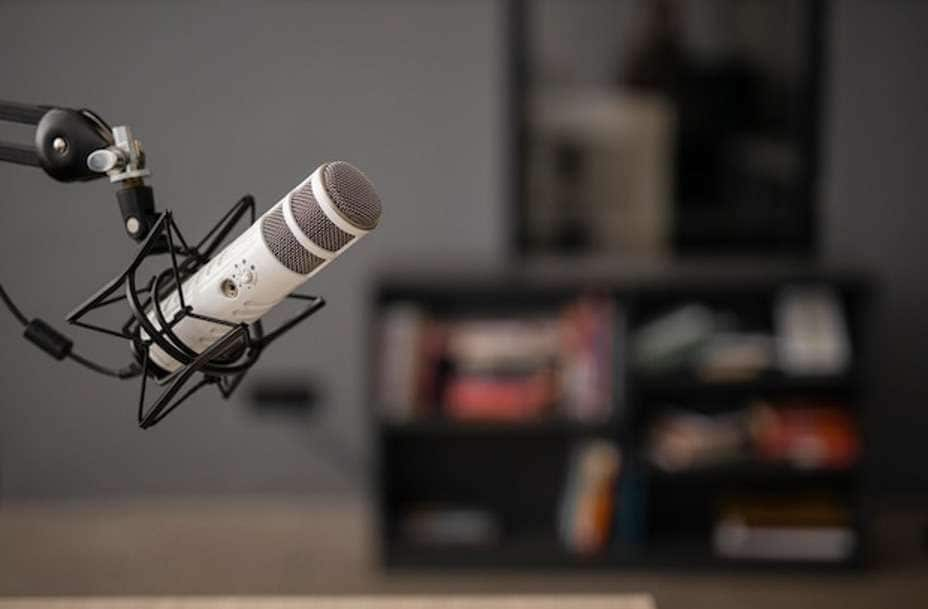
In this article
Part 1: Top 7 Podcast Sound Effect Libraries
Choosing the proper sound effects for your podcast can be overwhelming. This is why this section recommends different libraries with free sounds for podcasts that help you navigate their content easily. However, a pro tip is to use all libraries to maximize your resources. Don’t limit yourself to just one library to make your content more dynamic.
Without further ado, here are seven great sound effect libraries you can use for your podcasts:
| Tool | Editing Features | Key Features |
| Filmora | Yes | Built-in sound effects & music library AI text-to-audio generator Audio tools: speed, auto-sync, enhancement Cross-platform (desktop & mobile) Full video editing suite |
| Pixabay | Yes | 90,000+ royalty-free effects No attribution required Podcast categories: transitions, ambient, reactions High-quality downloads |
| Uppbeat | No | Free & premium podcast effects Organized by emotion & function Intro/outro templates Transition effects Auto licensing tracking |
| ZapSplat | No | 150,000+ WAV & MP3 effects Weekly updates Podcast categories (voice, broadcast) Freemium with HQ upgrades |
| Storyblocks | Yes | Unlimited access (subscription) Broadcast-quality audio Podcast templates (intro/outro) Rights management system Team accounts |
| Freesound.org | Yes | 670,000+ community clips Creative Commons licensing Advanced acoustic search Upload, remix & share |
| TunePocket | No | Lifetime license Podcast sound collections Interview & studio ambiance Branded elements Flexible subscription |
1. Filmora
First on the list is Wondershare Filmora. You might not expect it to be one of the choices, as it’s mainly a video editor tool. That makes this the best choice – it’s an all-in-one video editing tool and sound effects library. With tools like this, you can easily create podcasts and select from various sound effects without transferring from one app to another.
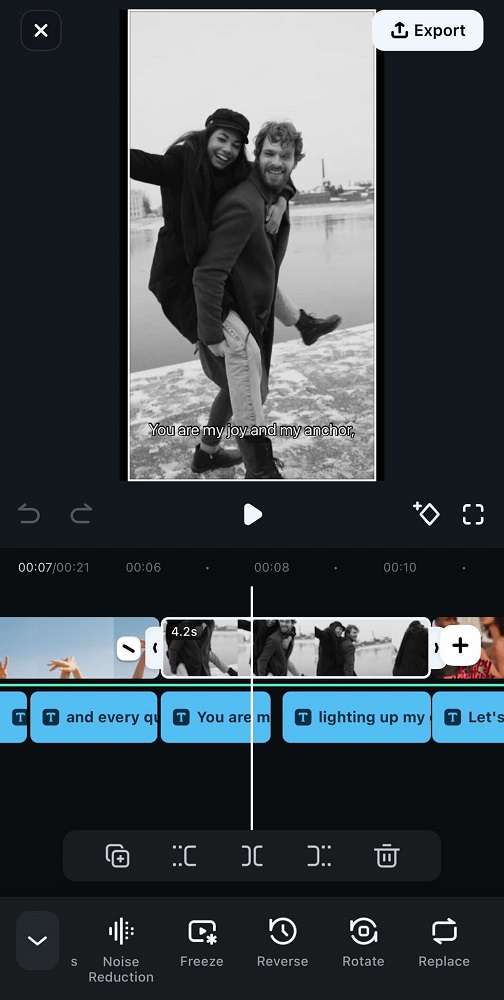
Of course, you can always use audio files downloaded from the other sound effects library here. With the help of several audio-editing tools, you can publish your content straight from the app. Here are some key features to take note of:
- Sound effects and music library. Filmora has a built-in library of diverse sound effects that you can enjoy straight out of the box. Use this as a starting point for improving your podcasts with sound effects.
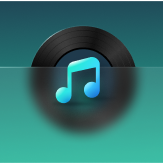 Phonk Uplifting Pissed Off01:39
Phonk Uplifting Pissed Off01:39

 Phon Aggressive Slap01:32
Phon Aggressive Slap01:32

 As The World Spins On03:43
As The World Spins On03:43

 Breaking Dawn04:26
Breaking Dawn04:26

 Whistling Walk02:24
Whistling Walk02:24

- Text-to-audio. Filmora also supports an AI-powered podcast generator. You will have to feed it a script or a prompt, and it will make the podcast for you. This makes it easier to churn out content.
- Audio editing tools. With Filmora’s various editing tools, such as speed controls, auto-sync features, and audio improvement, your podcast will be informative and a pleasure to listen to.
- Cross-platform. Aside from a desktop version, Filmora also offers a mobile version for both Android and iOS. The great thing is that both app versions transfer all of Filmora’s excellent audio tools to your smartphone. You can even enjoy cloud storage, where you can work anywhere and anytime.
How To Add Sound Effects To Podcasts With Filmora Mobile?
Now that you know all about Filmora, it’s time to learn how to use its video editing tools for podcast creation. Here, you’ll learn how to add the sound effects for podcasts.
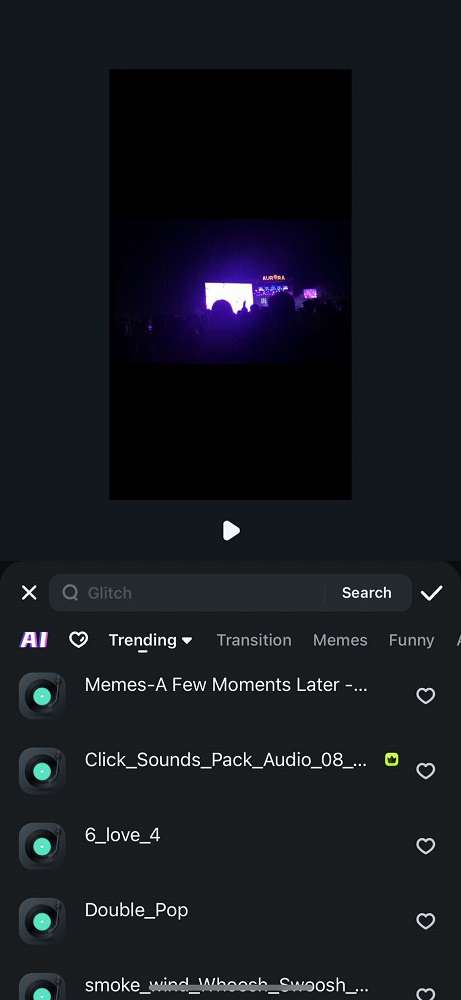
It’s easy to look for sound effects on Filmora mobile. Use this if you’re looking to start a podcast. You can even edit video content and soundbites and promote your content online on social media platforms.
2. Pixabay
Pixabay is a free resource offering 90,000+ royalty-free sound effects without requiring attribution. It features podcast-relevant categories, including transitions, ambient sounds, and human reactions. The platform's curated playlists help podcasters quickly find themed sound collections. All files are downloaded in high-quality formats compatible with podcast editing software—no registration is required for essential use, with optional account creation for saving favorites.

3. Uppbeat
Another sound library, Uppbeat, is focused on content creators, providing free and premium podcast sound effects. It organizes sounds by emotional impact and narrative function rather than traditional categories. It also includes production-ready intro/outro templates and transition effects designed explicitly for spoken-word content. Its features contain automatic licensing tracking to prevent copyright issues on distributed episodes and offer direct integration with significant podcast hosting platforms.
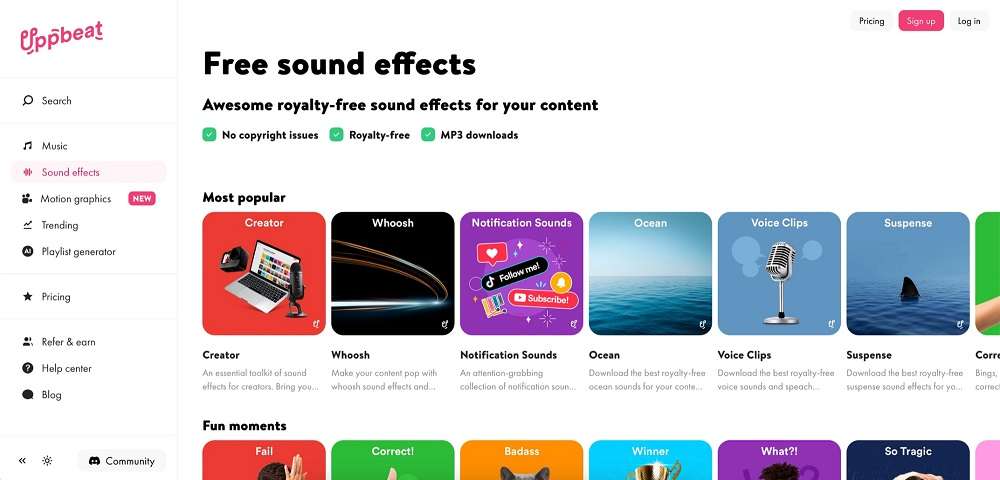
4. ZapSplat
ZapSplat contains 150,000+ sound effects in WAV and MP3 formats with regular weekly updates. Categorizes sounds according to podcast production needs, including voice enhancements, broadcast elements, and environmental sounds. This platform uses a freemium model with higher-quality downloads available to subscribers. It provides predefined podcast sound packs organized by genre and style. It also includes a custom sound request service for premium users.
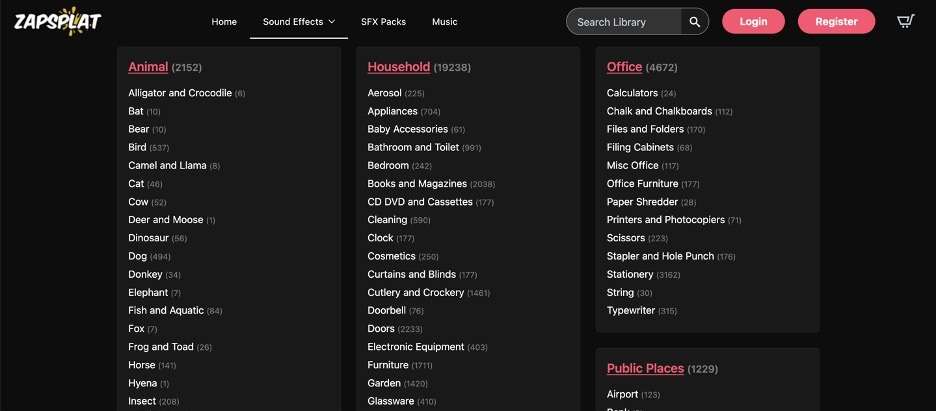
5. Storyblocks
Storyblocks is a subscription-based platform with unlimited access to professionally-produced podcast sound effects. It specializes in broadcast-quality audio elements designed by experienced radio and podcast engineers. It features ready-to-use podcast templates, including intro/outro sequences and segment separators. This includes a rights management system that eliminates copyright concerns across distribution channels. Offers team accounts for podcast networks and production companies.

6. Freesound.org
Freesound.org is a community-driven platform hosting 670,000+ audio clips under Creative Commons licenses. It features advanced search functions that allow podcasters to find sounds based on acoustic properties. Enabling uploading, downloading, and remixing of sounds for unique podcast audio branding. It includes an extensive tagging system for locating niche sound effects unavailable in commercial libraries. It requires attribution for most downloaded sounds, depending on the specific license.
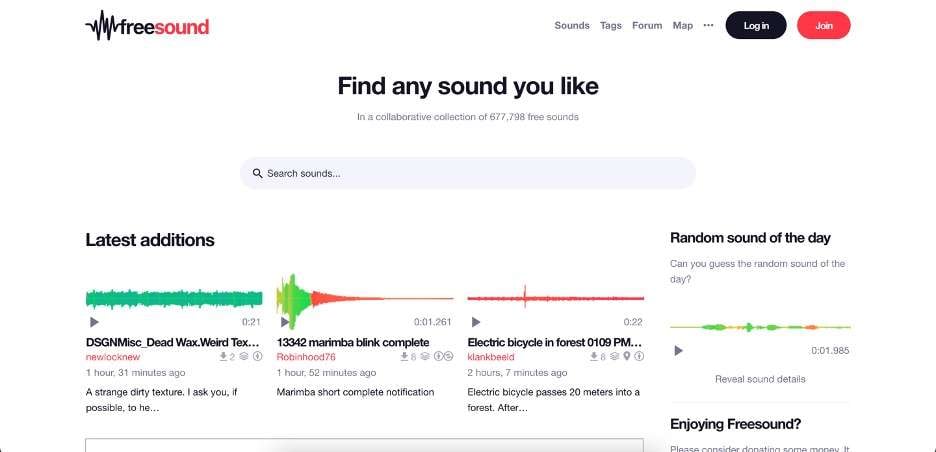
7. TunePocket
TunePocket provides unlimited access to royalty-free sound effects specifically selected for spoken content enhancement. The platform's lifetime license means podcasters can use downloaded effects indefinitely across multiple episodes and seasons. TunePocket regularly adds new podcast-specific sound collections, including interview ambiance, virtual studio environments, and branded podcast elements.
Its flexible subscription options cater to podcasters at all levels, from hobbyists to professional networks, with sound packs organized by podcast genre and production style.
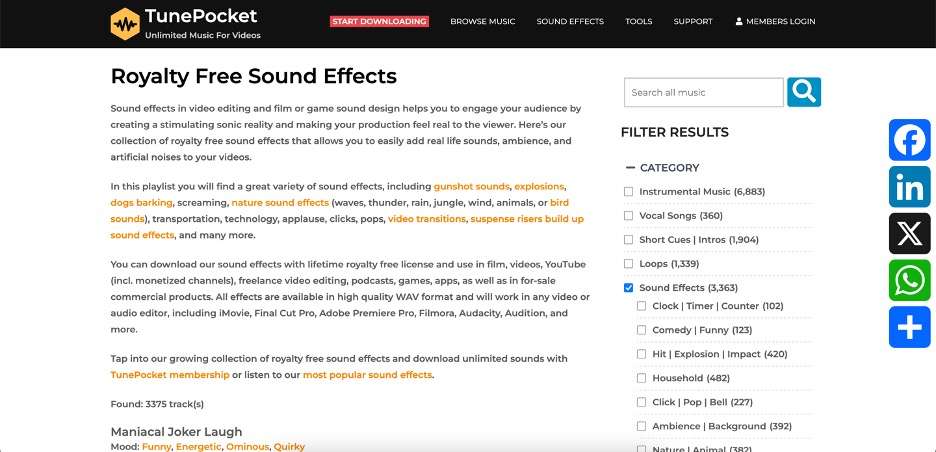
Part 2: Tips To Make the Most Out of Podcast Sound Effects
Sound effects transform essential podcasts into engaging experiences by establishing mood, enhancing storytelling, and creating memorable moments. When implemented correctly, they add professional quality without overwhelming content. Strategic use helps podcasters develop signature style while maintaining clarity of message.
Match Your Genre
Choose effects that fit your podcast category. True crime shows need subtle tension-building sounds, comedy podcasts can use exaggerated effects, and educational content requires minimal, purposeful audio cues. Study successful shows in your genre to understand conventions, then adapt them to your specific needs. Ensure all effects support rather than contradict your content theme.
Create Audio Branding
Develop consistent sounds that identify your show instantly. Design a recognizable intro/outro combination that becomes associated with your podcast. Use the same transition effects between segments throughout all episodes. Create specific sound signatures for recurring features or segments. This audio consistency builds recognition and strengthens listener connection even during passive listening.
Less Is More
Use sound effects sparingly for maximum impact. Excessive effects create listener fatigue and diminish effectiveness. Choose quality over quantity, implementing sounds only when they enhance the narrative. Save elaborate audio designs for truly significant moments. Recognize that silence creates contrast and builds anticipation, making strategic sound placement more effective.

Layer for Realism
Combine multiple subtle effects rather than single apparent sounds. Build environments with background ambient noise beneath primary effects. Avoid perfectly synchronized timing between impacts to maintain a natural feel. Adjust volume levels between layers to create depth. This approach creates authentic soundscapes that enhance storytelling without feeling artificial.
Edit for Balance
Mix effects to complement rather than overpower the dialogue. Set volume levels that keep voices as the primary audio element. Apply equalization to prevent the impact from conflicting with speech frequencies. Use compression to manage volume differences between effects and voices. Test final mixes on different devices to ensure a consistent listening experience across all platforms.
Conclusion
Ultimately, learning how to maximize the use of sound effects for podcasts can arouse the audience’s interest in your content. A few tweaks can vastly improve listener retention as they go through your podcast.
If you want to make compelling podcasts with the help of a built-in audio library and audio editing tools, then Filmora might be the right choice. Remember that you can even use audio files from the other libraries mentioned in this article with Filmora. Make the most of what you have, especially Filmora, for editing.



 100% Security Verified | No Subscription Required | No Malware
100% Security Verified | No Subscription Required | No Malware





